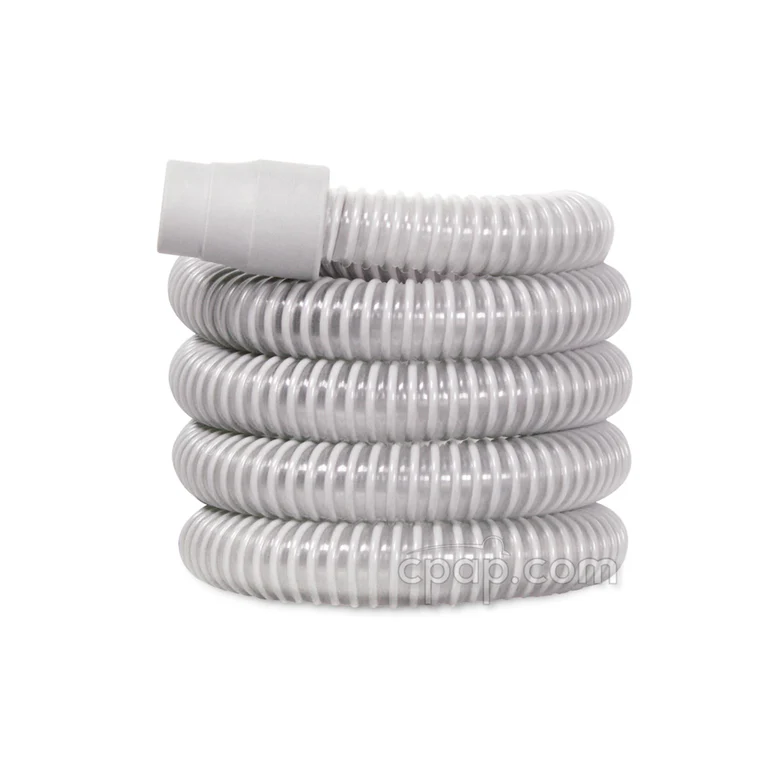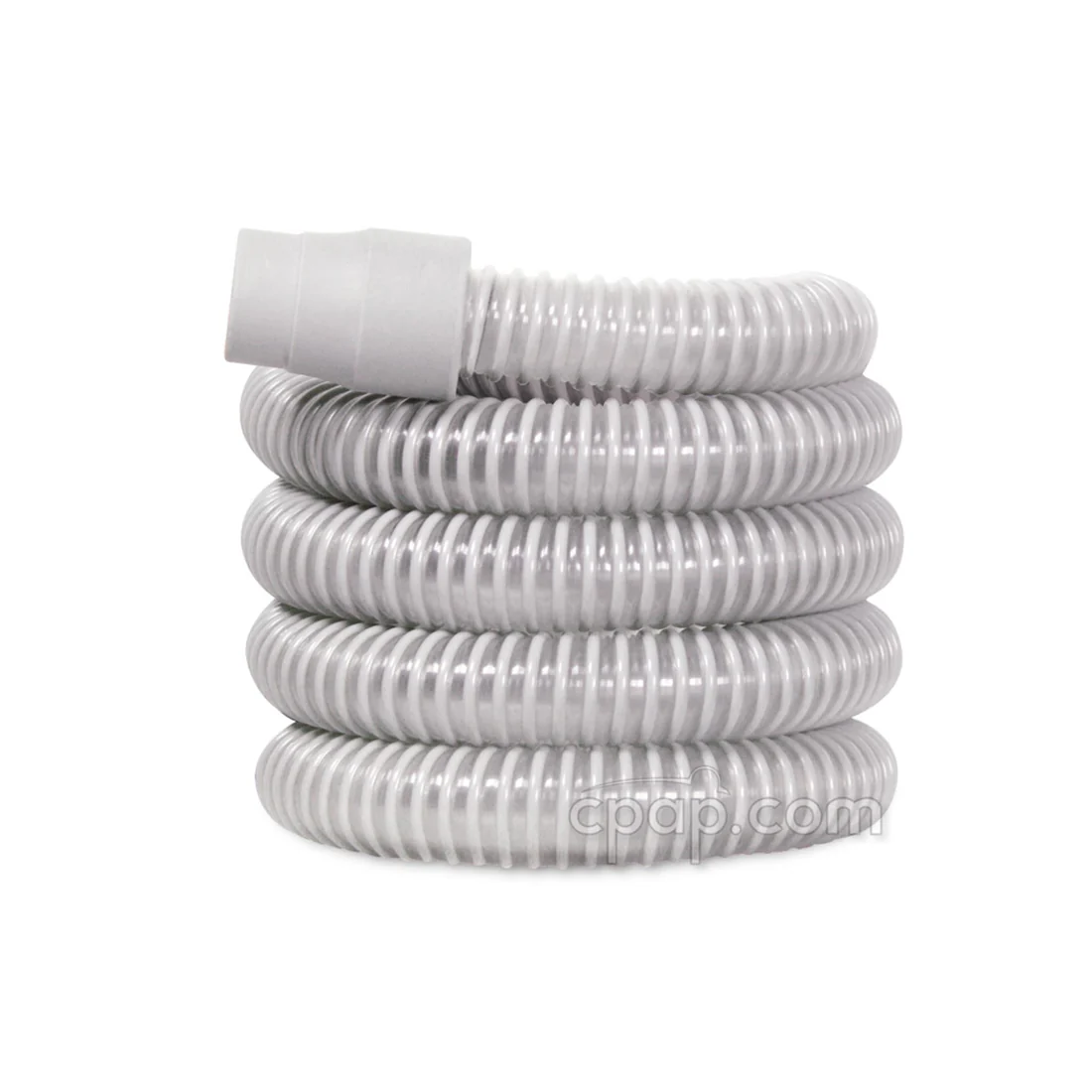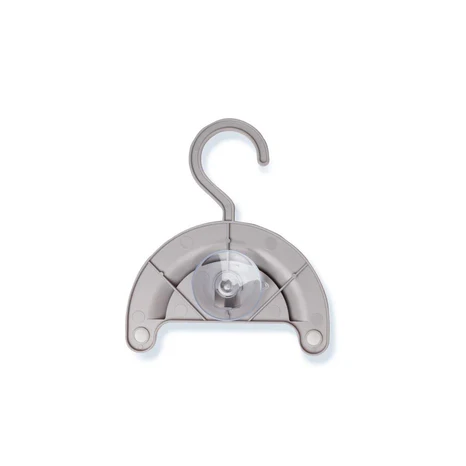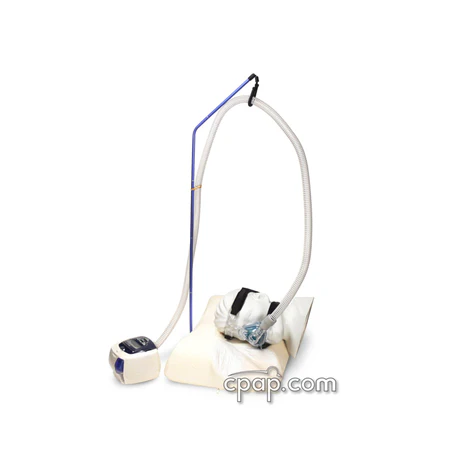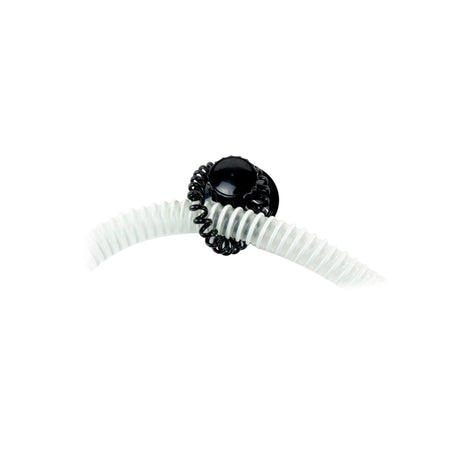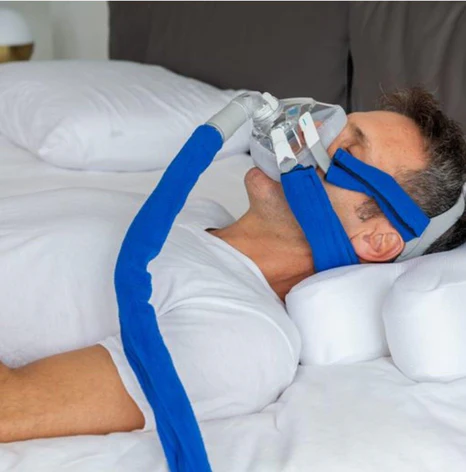Details
MoreTo quiet your night, the Standard CPAP Hose (CPAP Tubing) features an innovative smooth bore design that helps reduce noise and deliver consistent pressure. The standard tubing is 6 feet long, 19mm in diameter, and has 22mm rubber ends for connection with your CPAP machine and face mask.
Standard CPAP Hose Features and Benefits:
- Standard CPAP Tubing Compatible with Most PAP Devices and Masks
- 6 Feet Long, 19mm Diameter, and 22mm Rubber Ends
- Smooth Bore Design Reduces Sounds and Delivers Consistent Pressure
Standard Tube Fits Your CPAP Humidifier, CPAP Machine, and CPAP Mask
The latex-free CPAP tube is six feet long and has an inner diameter of 19mm that matches the standard, non-heated hoses included with almost every CPAP device for easy replacement. The 22mm cuff enables the hose to connect to any sleep apnea machine that is compatible with standard 6ft tubing.
Please Note: This is NOT a heated tube. If you're experiencing a buildup of condensation from your heated humidifier inside your standard CPAP hose, a heated hose might help reduce the rainout effect. Heated CPAP tubing helps to keep your humidification even more consistent during CPAP therapy but a tubing wrap may also help.
Please Note: If your device requires SlimLine Tubing, this hose is not compatible.
General Tips Section
Hypoallergenic Tubing
This product does NOT contain Latex.
Cleaning / Maintenance Tips
How do I clean a CPAP hose?
To clean a CPAP hose, you'll need to follow these steps:
- Run mild soap and water or vinegar through the center of the hose.
- Make sure the soapy solution or vinegar coats the interior of the hose.
- Scrub with a tube brush to remove any deposits, germs, and bacteria that may be left behind.
- Rinse thoroughly to remove any remaining suds.
- Hang the standard tubing over a towel rack to air dry.
Your CPAP hose will last longer if it is detached every morning and hung to air dry.
Drying the hose each morning will also prevent bacteria from growing in the damp interior and help reduce the possibility of colds and other health issues. Remember, whatever is in your tubing will be pushed into your lungs by the continuous positive airway pressure, so it's important to maintain a clean hose!
Hose care tips:
- Remove the hose by gripping the end or cuff, not the hose itself
- Hang the hose to dry after each use
- Wash hose weekly to avoid residue and maintain health
- Protect the hose from curious pets
HUU19018GT0WWGGI
Specs
MoreFAQs
MoreFast, free shipping on orders over $99
Get the best price with our 100% Price Protection Guarantee
Discounted replacements with Subscribe & Save
Try any CPAP mask for 30 days, risk-free
